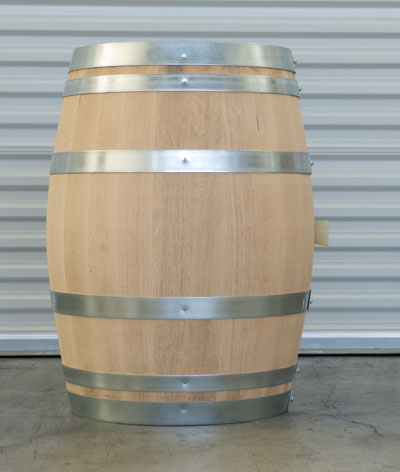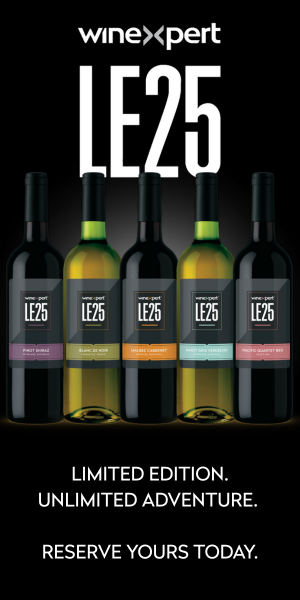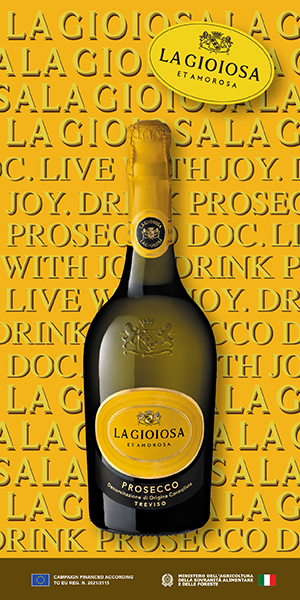
I hear you about not wanting to drop that kind of cash for a new barrel, especially as a new hobbyist. If you spread the cost of “good use” years for a new barrel over the volume of wine produced (let’s say three years of oak flavor extraction over 177 gallons (670 L) of wine — wine per batch x 3 vintages), you’re looking at an added cost of $8.47 per gallon ($2.23 per L) for the privilege of aging your wine in a $1,500 new French oak barrel. No wonder so many winemakers balk at that kind of spend and throw their hands up, sticking to oak-free styles like Sauvignon Blanc.
Especially for small-batch winemakers (because yes, 25 cases is a LOT of wine!) barrel alternatives, what I like to call non-coopered oak, can be a lifeline. Oak chips, cubes, segments, and even small “staves” (which look like a wooden yardstick) can all be used to creative effect in smaller batches. Luckily, the quality and availability of different toasts and blends has increased astronomically in the last ten years and it’s now possible to make delicious wines entirely barrel-free. Not only do the different types and toasts make for an almost unlimited array of possibilities, using oak pieces means you get benefits of the barrel (tannins, aromas, flavors, micro-oxygenation from wine soaking in wood) with considerable ease of use and energy savings. You won’t waste all the water and power needed to adequately clean barrels, your wines won’t be at risk of contamination from old barrels and you’ll have ultimate creative control as you can add and remove the oak whenever you wish. Since you’re not using the oak as a storage vessel, there’s also no chance of over-oaking during long-term aging. I’ve been making award-winning commercial wines with non-coopered oak for years and am a big fan.
Luckily, the quality and availability of different toasts and blends has increased astronomically in the last ten years . . .
I tend to ferment most reds on about 1–1.5 g/L (this is where your scale comes in handy) of small-particle oak. I’m not looking for final finished aroma or flavor here, just contributing some tannins to help support the color and to start to integrate wood into the wine. Extraction is almost instant since the particles are so small. When the wines are dry, pressed, and going through malolactic (ML) in a tank, I’ll add another 1–2 g/L of larger particle wood, like beans, cubes, or segments, expecting extraction to take 2–3 months in this vessel. Depending on the wine style and length of aging, I’ll later add “fan” arrays of tank “staves” and keep the wine on that wood for at least three months. After that point, the wood will be extracted and have nothing more to give, so the flavors, aromas, and tannins will be integrated into the wine. There are some things to keep in mind, however.
- The best wood and wood products come from oak that has been grown, harvested, seasoned, and toasted just like the wood would be for barrels.
- Smaller particle size equals faster extraction rate. The bigger the particle size, the higher the eventual quality flavors and aromas. Granulated oak (often used for fermentation) is almost instantaneous but will never give you the refined qualities of bigger pieces.
- Make sure to buy from reputable supply stores that have good turnover and ask about expiration dates. There’s nothing worse than spending money on old wood.
- Beware of buying from suppliers who break down larger bags and then sell oak in baggies at a time. You’ll have no idea how old the oak is, and it has a higher chance of being infected with TCA (the “corked” wine aroma can also come from wood and paper products in addition to corks) if the sack from the manufacturer has been opened. Most oak companies sell in 15- or 20-lb. (6.8- or 9.1-kg) bags, which can seem like a lot for a small-volume winemaker. If you can, try to go in with friends or a winemaking club to be able to buy a fresh, unopened bag.
- Whites will “show” oak more than reds so they can’t take as much wood before it’s too much.
- Taste often. Add gradually, taste and gain experience. And most of all, have fun!
Some cooperage companies that sell non-coopered oak:
Stavin: www.stavin.com
Radoux: www.tonnellerieradoux.com
Boisé: www.g3enterprises.com/boise-oak-alternatives




